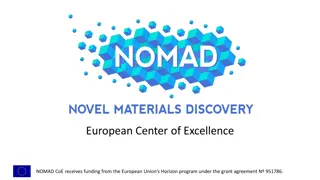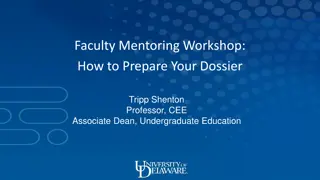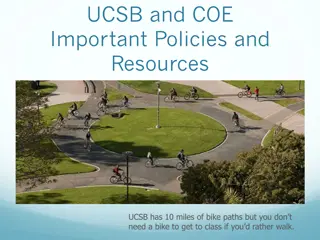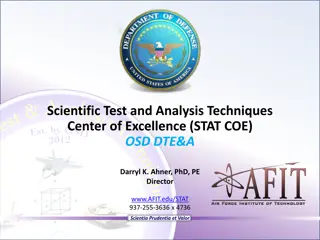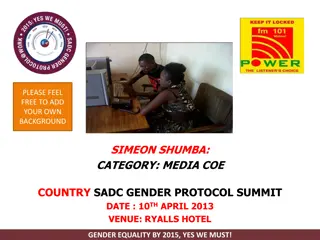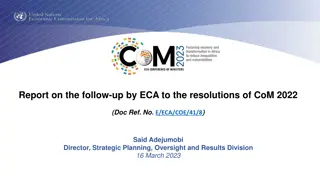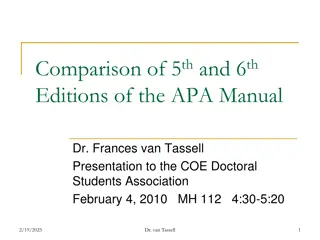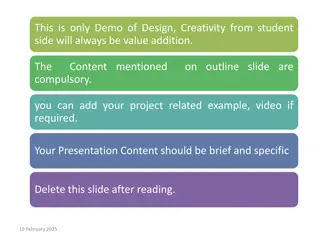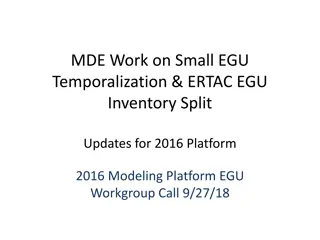
Field and Clinical Partnerships: Enhancing Teacher Preparation Standards
Explore updates, insights, and key takeaways on teacher preparation standards, including observations, differences, and the impact of graduates on students. Learn about the CAEP process and the importance of data literacy in education.
Download Presentation

Please find below an Image/Link to download the presentation.
The content on the website is provided AS IS for your information and personal use only. It may not be sold, licensed, or shared on other websites without obtaining consent from the author. If you encounter any issues during the download, it is possible that the publisher has removed the file from their server.
You are allowed to download the files provided on this website for personal or commercial use, subject to the condition that they are used lawfully. All files are the property of their respective owners.
The content on the website is provided AS IS for your information and personal use only. It may not be sold, licensed, or shared on other websites without obtaining consent from the author.
E N D
Presentation Transcript
Office of Field and Clinical Partnerships and Outreach: Updates Visiting district offices, schools, program areas, clinical faculty Partnership Model working group Advisory Board New Teacher Evaluation Rubrics Website Placements Certification Data collection
CAEPcon September 29-October 1 Washington, DC
From NCATE to CAEP Observations, Differences, Opportunities More autonomy - methodologically Substantive evidence vs. superficial evidence Data literacy very important Advanced standards not finalized
The Standards Standard 1 Pedagogical Content Knowledge Standard 2 Clinical Partnerships & Practice Standard 3 Candidate Quality, Recruitment, and Selectivity Standard 4 Program Impact Standard 5 Quality Assurance Plan & Continuous Improvement
Initial vs. Advanced Standard Number of initial Components Number of Advanced Components 1 5 2 2 3 2 3 6 4 4 4 2 5 5 5
CAEP Process & Timeline EPPs submit a self study report about 8 months before on-site visit. The report is thin on narrative and thick on evidence Once submitted, the review team will engage in an iterative process of asking questions and seeking clarification. The more questions answered during that time period, the fewer surprises when they come to campus
Key Takeaways With respect to teacher preparation, we are in very good shape (much better than a lot of other school/college/departments) Dispositions are huge Need to overhaul our surveys, add in an admissions survey, and align surveys so the data are usable and comparable across all stakeholders
Key Takeaways Standard 4 Program Impact What impact do our graduates have on their students must meet all sub-standards or no accreditation. Standards 4.2, 4.3, 4.4 surveys, that are well-aligned and informative, can constitute our evidence Standard 4.1 is the issue need actual student learning outcome data. Can use whatever methodology we want 10% purposeful sample We can decide how and why we define purposeful
Standard 4: 4.2, 4.3, 4.4 4.2 What evidence (other than measures of P-12 student learning) do I have that would demonstrate inservice graduates are effective teachers? 4.3 What evidence do we have that would demonstrate that employers are satisfied with our program graduates once hired? 4.4 What evidence do we have that would demonstrate our program graduates are satisfied now that they have been hired and are on-the- job?
Calling all qualitative methodologists Standard 4.1 What evidence do we have that would demonstrate graduates impact on P-12 student learning? What research methodologies could we feasibly employ to gain such information? The EPP creates data similar to state data in conjunction with student assessment and teacher evaluations conducted in school districts where some portion of its completers are employed
Advanced Programs If you feel your advanced program should be exempt from CAEP review, must complete form and submit: Intent of the advanced program is to develop P-12 teachers or other school professionals for employment in P-12 Schools/Districts Over 50% of the enrollees in the program are teachers or other school professionals in P-12 schools/districts Ay M.Ed; M.S; M.A.; Ed.D; or Ph.D. Program specific to P-12 schools districts. Advanced level program that are designed to further the knowledge and skills of P-12 and/or other school professionals such as curriculum and instruction, educational technology, etc.* Any track, endorsement, or add on program
Advanced programs GRE may no longer be required for admission The CAEP minimum criteria are a college gpa of 3.0 OR a group average performance on nationally normed assessments, or substantially equivalent state-normed or EPP administered assessments of mathematical, verbal, and written achievement in the top 50 percent of those assessed An EPP may develop and use a valid and reliable substantially equivalent alternative assessment of academic achievement. The 50th percentile standard for writing will be implemented in 2021. The CAEP minimum criteria apply to the group average of enrolled candidates whose preparation begins during an academic year.
Advanced Programs, cont. EDL requires two internships in separate settings. If there is no way to meet this requirement (2.2) email CAEP as the rubrics are still in draft form. Data Literacy important to Advanced Programs.
Feedback on Advanced Standards Advanced Standards still in draft form. Comments can be sent to: Glenda.Breaux@caepnet.org Tatiana.rivadeneyra@caepnet.org http://www.caepnet.org/standards/standards-advanced-programs
Partnerships-Field Experiences Partnership Model Co-constructed mutually beneficial relationship Shared responsibility for students Diverse settings Selection of cooperating teachers Joint curriculum/ professional development (some online) Technology Coherence between coursework and practicum/student teaching
Quality Assurance System We are in good shape, we just need to document our system: State Goals Document and record evidence Document how candidates perform over time Clearly define how effective is effective enough Stakeholders must participate in the process Review, readjust, review, readjust, etc.
Resources CAEPcon presentations: http://caepnet.org/about/2016-fall-caepcon




